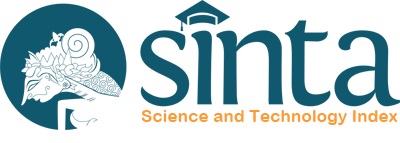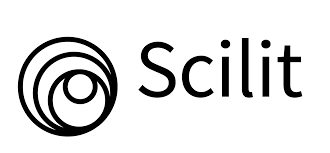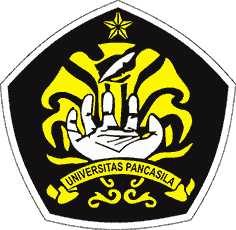Soft System Methodology Approach: Case Study of Renewable Energy Development of Wood Pellets as an Implementation of a Circular Economy
DOI:
https://doi.org/10.35814/asiimetrik.v6i1.5958Keywords:
wood pellet, renewable energy, biomass waste, SSM, conceptual modelAbstract
The development of wood pellets as a sustainable energy source derived from biomass waste has not significantly increased over the past few decades, despite a rise in demand for and sales of its products worldwide. Several variables contribute to the intricate issue of creating wood pellets from biomass waste as a renewable energy source, including the roles and responsibilities of various stakeholders, including the government, financial institutions, academia, the manufacturing sector, and non-governmental organizations. This article uses a waste management model that employs the Soft System Methodology (SSM) approach to assess the challenge of producing wood pellets from biomass waste as a renewable energy source and possible solutions. Data and information on the development of wood pellets as a renewable energy source derived from biomass waste were acquired through a literature review and in-depth interviews with specialists. The study’s findings demonstrate that using the SSM technique leads to a conceptual model that depicts the interactions between sub-elements to enhance the development of wood pellets as a biomass waste-derived renewable energy source. This concept was developed to lessen any adverse effects and enhance the processing of biomass waste. The success of goals is determined by the importance of each actor’s role and the collaboration of other actors, including local, national, and corporate governments. The Ministry of Environment and Forestry is the primary stakeholder and has a say in policy and program formulation. The Ministry of Industry, Energy and Mineral Resources, financial institutions, and other relevant organizations can help with this effort.
Downloads
References
Antunes, C.H. et al. (2016) ‘An Application of Soft Systems Methodology in the Evaluation of Policies and Incentive Actions to Promote Technological Innovations in the Electricity Sector’, Energy Procedia, 106, pp. 258–278.
Ats-Tsauri, M.I., Wilarnugroho, B. and Purba, H.H. (2022) ‘A conceptual model for energy management in the steel industry: A Soft System Methodology (SSM) approach’, SINERGI, 26(3), pp. 319–326.
Belhadi, A. et al. (2022) ‘A self-assessment tool for evaluating the integration of circular economy and industry 4.0 principles in closed-loop supply chains’, International Journal of Production Economics, 245, p. 108372.
Bello, M.O. and Solarin, S.A. (2022) ‘Searching for sustainable electricity generation: The possibility of substituting coal and natural gas with clean energy’, Energy & Environment, 33(1), pp. 64–84.
Bening, C.R., Pruess, J.T. and Blum, N.U. (2021) ‘Towards a circular plastics economy: Interacting barriers and contested solutions for flexible packaging recycling’, Journal of Cleaner Production, 302, p. 126966.
Bocken, N.M.P. and Geradts, T.H.J. (2020) ‘Barriers and drivers to sustainable business model innovation: Organization design and dynamic capabilities’, Long Range Planning, 53(4), p. 101950.
Cavana, R.Y. and Maani, K.E. (2000) ‘A Methodological Framework for Systems Thinking and Modelling (ST&M) Interventions’, in Proceedings of ICSTM 2000. 1st International Conference on Systems Thinking in Management, Australia: World Academy of Science, Engineering and Technology, pp. 136–141.
Cavicchi, C., Oppi, C. and Vagnoni, E. (2022) ‘Energy management to foster circular economy business model for sustainable development in an agricultural SME’, Journal of Cleaner Production, 368, p. 133188.
Checkland, P. (ed.) (1999) Systems Thinking, Systems Practice. In: Currie, W.L. and Galliers, B., Eds., Rethinking Management Information Systems, 1st edition. Oxford ; New York: Oxford University Press.
Coelho, D., Antunes, C.H. and Martins, A.G. (2010) ‘Using SSM for structuring decision support in urban energy planning’, Ukio Technologinis ir Ekonominis Vystymas, 16(4), pp. 641–653.
Grafström, J. and Aasma, S. (2021) ‘Breaking circular economy barriers’, Journal of Cleaner Production, 292, p. 126002.
Hasheminasab, H. et al. (2022) ‘A circular economy model for fossil fuel sustainable decisions based on MADM techniques’, Economic Research-Ekonomska Istraživanja, 35(1), pp. 564–582.
Hoefnagels, E.T.A., Junginger, H.M. and Faaij, A.P.C. (2012) Capacity study for solid biomass facilities - scenarios for supply and demand of solid biomass for electricity and heat generation in north west Europe. Thesis. Utrecht University.
de Jesus, A. and Mendonça, S. (2018) ‘Lost in Transition? Drivers and Barriers in the Eco-innovation Road to the Circular Economy’, Ecological Economics, 145, pp. 75–89.
Kirchherr, J. et al. (2018) ‘Barriers to the Circular Economy: Evidence From the European Union (EU)’, Ecological Economics, 150, pp. 264–272.
Kristia, K. and Rabbi, M.F. (2023) ‘Exploring the Synergy of Renewable Energy in the Circular Economy Framework: A Bibliometric Study’, Sustainability, 15(17), p. 13165.
Lima, M.A. et al. (2020) ‘Renewable energy in reducing greenhouse gas emissions: Reaching the goals of the Paris agreement in Brazil’, Environmental Development, 33, p. 100504.
Malinauskaite, J. et al. (2017) ‘Municipal solid waste management and waste-to-energy in the context of a circular economy and energy recycling in Europe’, Energy, 141, pp. 2013–2044.
Olabi, A.G. (2019) ‘Circular economy and renewable energy’, Energy, 181, pp. 450–454.
Patwa, N. et al. (2021) ‘Towards a circular economy: An emerging economies context’, Journal of Business Research, 122, pp. 725–735.
Pradnyaswari, I. et al. (2022) ‘Barriers and Opportunities of Bio pellets Fuel Development in Indonesia: Market Demand and Policy’, IOP Conference Series: Earth and Environmental Science, 997(1), p. 012003.
Proskurina, S. et al. (2019) ‘Global biomass trade for energy— Part 2: Production and trade streams of wood pellets, liquid biofuels, charcoal, industrial roundwood and emerging energy biomass’, Biofuels, Bioproducts and Biorefining, 13(2), pp. 371–387.
Ranta, V., Aarikka-Stenroos, L. and Mäkinen, S.J. (2018) ‘Creating value in the circular economy: A structured multiple-case analysis of business models’, Journal of Cleaner Production, 201, pp. 988–1000.
Rimantho, D. (2020) ‘Pengelolaan limbah elektronika di DKI Jakarta menggunakan pendekatan Soft System Methodology’, Jurnal Pengelolaan Lingkungan Berkelanjutan (Journal of Environmental Sustainability Management), pp. 552–564.
Rimantho, D. et al. (2023) ‘The strategy for developing wood pellets as sustainable renewable energy in Indonesia’, Heliyon, 9(3), p. e14217.
Sassanelli, C. et al. (2019) ‘Circular economy performance assessment methods: A systematic literature review’, Journal of Cleaner Production, 229, pp. 440–453.
Tura, N. et al. (2019) ‘Unlocking circular business: A framework of barriers and drivers’, Journal of Cleaner Production, 212, pp. 90–98.
Wang, J. et al. (2021) ‘Decoupling and decomposition analysis of investments and CO2 emissions in information and communication technology sector’, Applied Energy, 302, p. 117618.





























